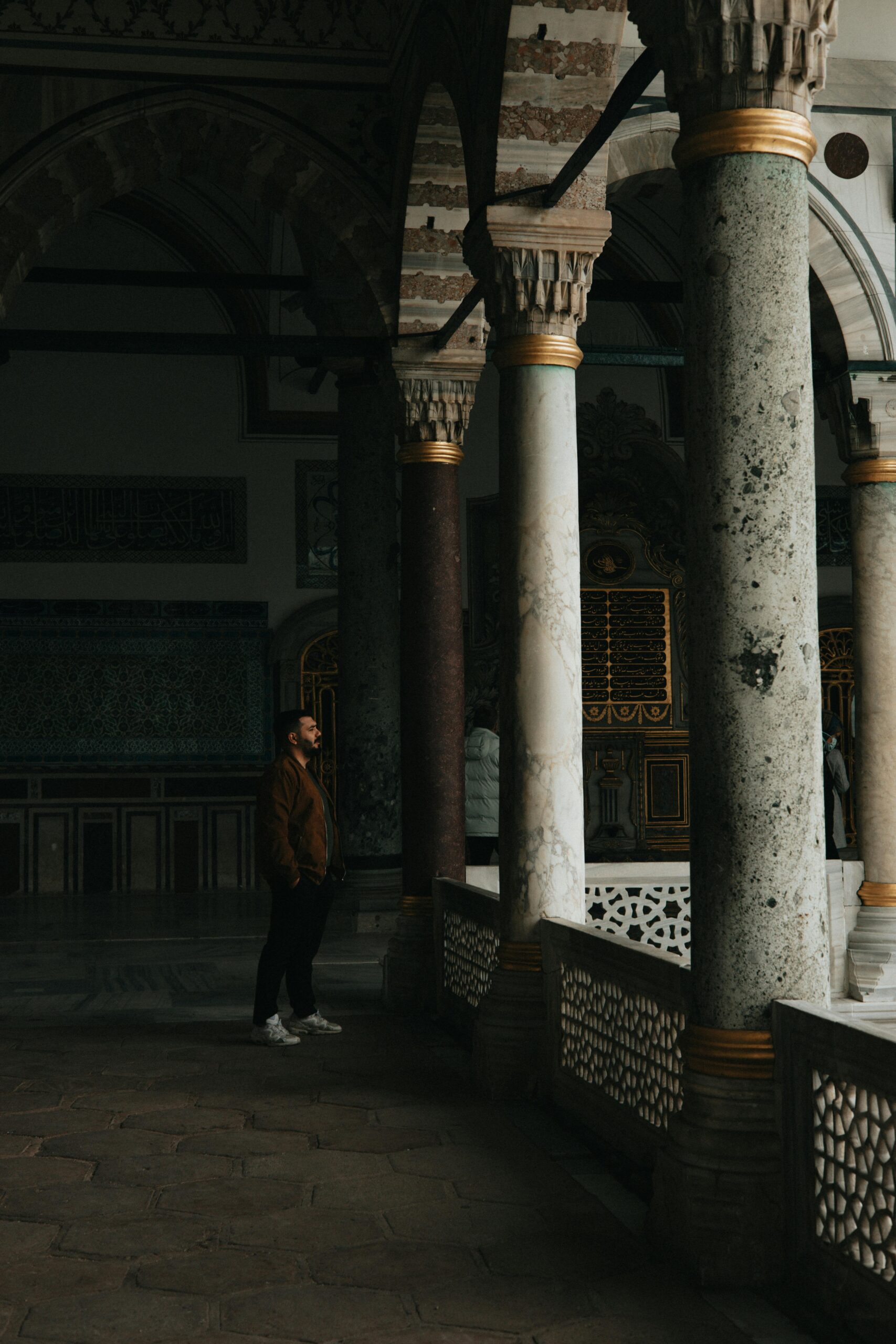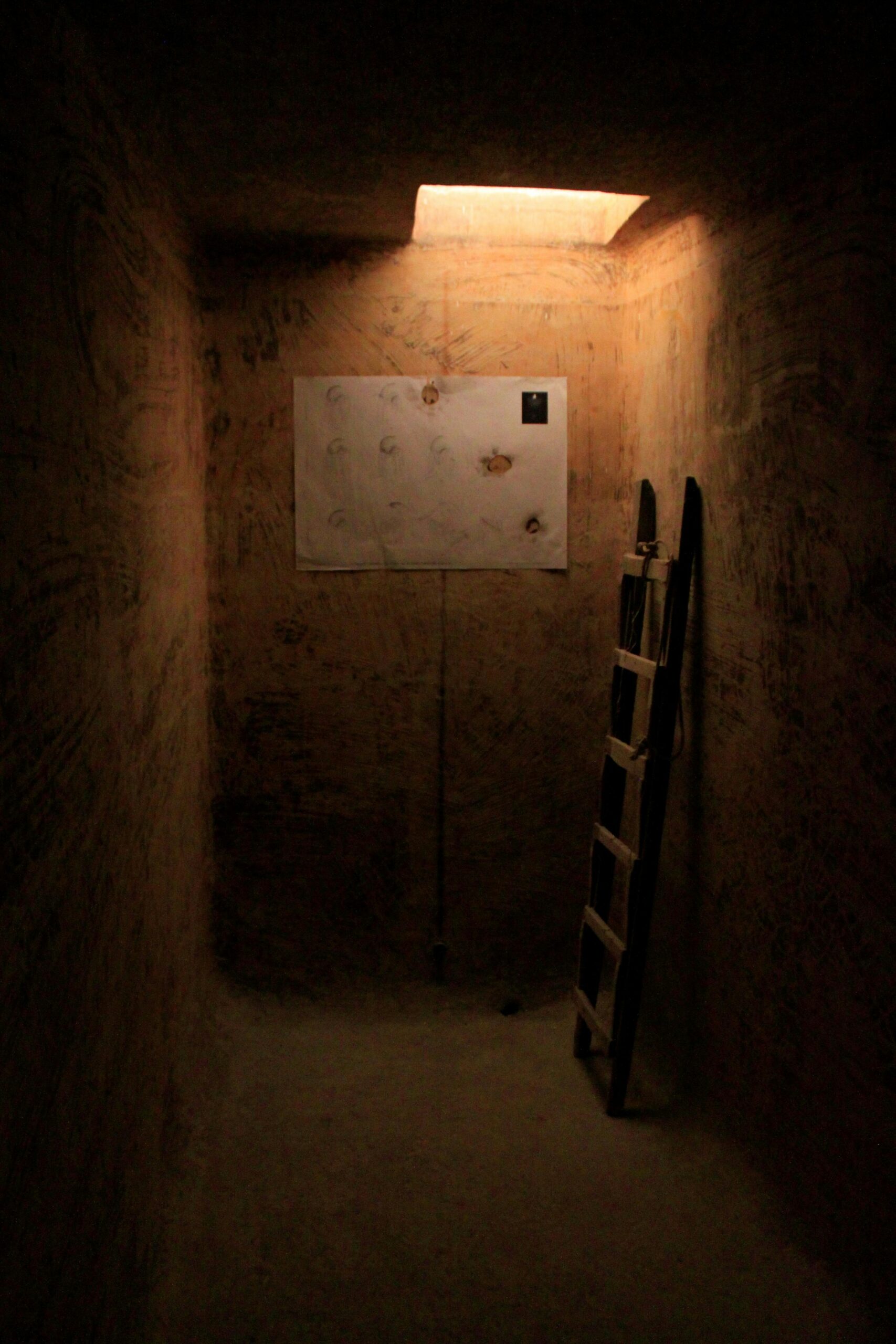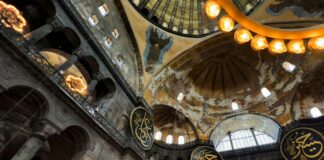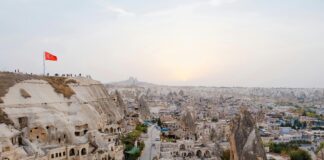Exploring the rich traditions and hidden stories behind visiting Turkish cemeteries offers a unique window into Turkey’s vibrant culture and history. Have you ever wondered what secrets lie within the serene, yet often overlooked, resting places scattered across this ancient land? This cultural guide to visiting Turkish cemeteries unveils fascinating customs, spiritual rituals, and the respectful etiquette every traveler should know before stepping into these sacred sites. Whether you’re a curious traveler or a history enthusiast, understanding the cultural significance of Turkish cemeteries will transform your visit into an unforgettable experience.
Turkish cemeteries are not just burial grounds; they are living museums of tradition and storytelling. These places are deeply intertwined with Turkish heritage and religious practices, showcasing intricate tombstone inscriptions and symbolic motifs that reflect centuries of beliefs and values. But did you know that visiting a cemetery in Turkey is often accompanied by unique social customs and spiritual reflections? Learning these cultural dos and don’ts ensures you show proper respect while gaining insight into the local way of honoring ancestors. From the significance of flowers and candles to the quiet moments of prayer, every detail holds meaning worth discovering.
In this guide, we’ll reveal the hidden gems and secrets that make Turkish cemeteries a must-visit for culturally curious travelers. Ready to uncover the mysteries and deepen your connection with Turkey’s past? Keep reading to explore the etiquette, history, and spiritual symbolism that turn these peaceful spaces into powerful cultural landmarks. Don’t miss out on this incredible journey into a lesser-known aspect of Turkish culture that many visitors overlook!
Exploring Turkish Cemeteries: 7 Fascinating Cultural Traditions You Didn’t Know
Exploring Turkish Cemeteries: 7 Fascinating Cultural Traditions You Didn’t Know
Turkish cemeteries might not be the first place travelers think to visit when exploring Turkey, but these resting places are full with history and culture that many people don’t realize. They offer an unique window into Turkish society, religion, and traditions from centuries ago till today. If you ever wondered what makes Turkish cemeteries different than others, you are in for a treat. This guide will take you through seven fascinating cultural traditions connected with these cemeteries, revealing secrets you probably never knew existed. Visiting these sites could change how you see Turkish culture entirely.
The Significance of Cemeteries in Turkish Culture
In Turkey, cemeteries are much more than mere burial grounds. They are considered sacred spaces where families come together to remember their ancestors and reflect on life. Islamic customs play a huge role since most Turks are Muslims, but there are also regional variations influenced by local beliefs and history. Cemeteries can be found in urban areas, villages, and even on hillsides outside towns. They often contain tombstones with intricate carvings and inscriptions written in Ottoman Turkish or modern Turkish, telling stories of the deceased.
1. The Unique Style of Ottoman Tombstones
One of the most striking things you will notice in older Turkish cemeteries are the Ottoman tombstones. Unlike plain gravestones seen in many Western countries, these stones have elaborate designs and symbols. For example, you might see a turban carved on a man’s tombstone, which represents his social status or profession. Women’s gravestones sometimes have floral motifs symbolizing beauty and purity. The inscriptions are usually poetic, written in calligraphy, and can provide insight about the person’s life and character.
2. Visiting Cemeteries During Religious Holidays
Turkish families traditionally visit cemeteries during religious holidays such as Ramadan and Kurban Bayramı (Eid al-Adha). It is believed that praying for the dead during these times helps souls find peace. Families clean the graves, place fresh flowers, and light candles or lamps. Children often participate by reciting prayers or reading Quran verses aloud. This practice strengthens family bonds and keeps the memory of deceased relatives alive.
3. The Role of Cemeteries in Turkish Folk Beliefs
Beyond Islamic practices, many cemeteries are also places where folk beliefs survive. Some people believe that spirits of the dead linger around the graves, and special rituals are performed to protect against evil or to bring good luck. For example, sprinkling water or planting certain herbs near the tombs is common in some regions. These customs vary widely across Turkey, showing the blend of religious and cultural influences.
4. Gender-Specific Burial Customs
In Turkey, burial customs sometimes differ depending on gender. Historically, men were often buried with items related to their professions or status, while women’s graves might include jewelry or personal belongings. Some cemeteries have separate sections for men and women, reflecting social norms from earlier times. Tombstone shapes and inscriptions also differ; rounded tops are usually for women, while men’s stones have pointed or turban-like shapes. These details tell us about gender roles in Turkish society through history.
5. Cemeteries as Outdoor Museums
Many old Turkish cemeteries feel like open-air museums due to their artistic and historical value. Walking through them, you can see a timeline of changing artistic styles, language scripts, and religious symbols. Some cemeteries have graves of notable historical figures, poets, or heroes, making them pilgrimage sites for history lovers. Photographers and artists also find these cemeteries inspiring for their unique atmosphere and beauty.
6. The Tradition of Reading the Quran at Graves
It is a common practice in Turkey to read Quran verses aloud at the gravesite after burial or during visits. This is believed to bring blessings to the deceased and comfort to the living. Sometimes, entire groups from the community gather for these recitations, turning the cemetery into a place of collective remembrance. This tradition highlights the strong spiritual connection between the living and the dead in Turkish culture.
7. Modern Changes and Preservation Efforts
Modernization and urban growth have affected many Turkish cemeteries. Some old sites are now under threat due to construction or neglect. However, there are growing efforts to preserve these cultural treasures. Local governments and heritage organizations work on restoring historic cemeteries and promoting awareness about their importance. Visitors are encouraged to respect the sites, avoid disturbing graves, and learn about the traditions that make these places special.
Here is a simple comparison table showing traditional vs modern cemetery aspects in Turkey:
| Aspect | Traditional Cemeteries | Modern Cemeteries |
|---|---|---|
| Tombstone Design | Ornate, symbolic carvings | Simpler, standardized shapes |
| Grave Items | Personal belongings, profession symbols | Minimal or none |
Community Involvement
How to Respectfully Visit Turkish Cemeteries: Essential Etiquette Tips for Travelers
Visiting cemeteries might sound unusual for many travelers, but in Turkey, these places offer a deep glimpse into the country’s rich history, culture, and traditions. Turkish cemeteries are not just resting places for the departed; they are sacred sites that hold stories from centuries ago, reflecting the values, art, and beliefs of Turkish people. If you ever find yourself near these sites, knowing how to behave respectfully is very important. It shows appreciation and understanding for Turkish culture, which often gets overlooked by tourists. So, let’s explore how to navigate these solemn grounds with the right etiquette, uncover some cultural secrets, and understand why these visits can be meaningful.
Why Visiting Turkish Cemeteries Matters
Turkish cemeteries tell much more than just who passed away. Many of them date back to Ottoman times, with beautiful gravestones carved in calligraphy and symbols that speak about the deceased’s life, profession, or virtues. Visiting them is like walking through a history book made of stone and stories. For example, in Istanbul, you can find cemeteries where famous poets, sultans, and saints rest. These places are often peaceful, surrounded by nature, and provide a quiet space for reflection. However, because they are sacred, visitors must behave with respect, or they risk offending locals and disrupting the peace.
Essential Etiquette Tips for Travelers Visiting Cemeteries in Turkey
When you decide to visit a Turkish cemetery, there are some basic rules you should keep in mind. Not everyone knows them, and breaking these can be seen as disrespectful.
- Dress modestly: Covering shoulders and knees is a good rule. Avoid flashy clothing.
- Speak softly: Cemeteries are quiet places meant for remembrance, so loud talking or laughing is inappropriate.
- Avoid stepping on graves: Always walk on paths or designated areas because graves are considered sacred.
- Don’t take photos without permission: Some families don’t want their loved ones’ graves photographed.
- Do not eat or drink within the cemetery grounds.
- Avoid pointing feet toward graves, as this is seen disrespectful in Turkish culture.
- If you want to leave flowers, white flowers are preferred, symbolizing purity and respect.
- Remove hats or caps as a sign of respect.
Following these guidelines will help you avoid awkward moments and show that you care about Turkish customs.
Historical and Cultural Context Behind Turkish Cemeteries
Turkey’s cemeteries reflect its multicultural and religious heritage. Most cemeteries you will come across are Muslim, but there are also Christian, Jewish, and other minority burial grounds, especially in cities like Istanbul. The design and inscriptions on the tombstones can tell you about the person’s religion, social status, and even their personality.
For example, Ottoman-era graves often feature intricate calligraphy with verses from the Quran, and sometimes the gravestone’s shape hints at the gender of the deceased—men’s stones are usually taller and more rectangular, while women’s stones might be rounded or decorated differently. Some graves also have symbols like a turban or fez carved on them, indicating the person’s profession or rank.
Understanding these subtle signs can enrich your visit and make it more than just a walk through a cemetery; it becomes a journey into Turkey’s past.
What You Should Never Do in a Turkish Cemetery
While some rules are obvious, there are some less-known things you should never do to avoid disrespect.
- Don’t sit on a gravestone: It’s seen as disrespectful and inappropriate.
- Avoid loud music or celebrations: Cemeteries are solemn places.
- Never remove or disturb objects placed on graves by families.
- Don’t litter or leave trash behind; Turkish cemeteries are usually very well kept.
- Avoid taking selfies or making jokes near graves.
- Don’t enter restricted areas or closed cemeteries without permission.
These points might seem obvious, but tourists sometimes forget them, leading to uncomfortable situations.
Practical Examples of Cemetery Visits in Turkey
If you want to explore Turkish cemeteries with respect and insight, here are some examples you can consider:
- Eyüp Cemetery, Istanbul: One of the most historic Muslim cemeteries, located near the Eyüp Sultan Mosque. Visitors often come here not only to see graves but also to pray and feel the spiritual atmosphere.
- Aşiyan Cemetery, Istanbul: Known for housing the graves of famous Turkish poets and writers. It’s a quiet place with scenic views over the Bosphorus.
- Karacaahmet Cemetery, Istanbul: One of the oldest and largest cemeteries, offering a glimpse into Ottoman-era burial traditions.
- Christian cemeteries in Istanbul: Like the Armenian or Greek Orthodox cemeteries, they show the diverse religious history of Turkey.
When visiting these places, always check local customs, ask permission if necessary, and follow the etiquette tips mentioned before.
Summary of Do’s and Don’ts When
The Hidden Symbolism Behind Turkish Tombstones: What Every Visitor Should Understand
Visiting cemeteries might not be the first thing that come to mind when you think about traveling Turkey, but there is much more than meets the eye in these quiet places. Turkish tombstones hold stories, symbols, and cultural secrets that tell the history and beliefs of the people long gone. Many visitors skip over these sites, unaware that beneath the stone surface lie hidden messages and traditions. This article attempts to uncover what every traveler should understand before setting foot in Turkish cemeteries — a cultural guide to appreciating this unique part of Turkey’s heritage.
The Rich History Behind Turkish Cemeteries
Turkish cemeteries date back centuries, with some tombstones from the Ottoman era standing as silent witnesses to a time long past. In Ottoman times, cemeteries were more than just burial places; they served as community landmarks and reflected social status, religion, and personal achievements. The inscriptions and symbols carved on the tombstones often gave clues about the person’s life, occupation, and even their character.
In many regions, Islamic beliefs strongly influenced tombstone design, but local customs and traditions also played a big role. For example, in Eastern Turkey, you may find tombstones with motifs that look very different from those in Western parts of the country. This diversity shows how varied the cultural landscape in Turkey is, and how cemeteries mirror this variety.
What The Symbols Mean — A Basic Guide
When you visit a Turkish cemetery, you will notice that tombstones are not just plain stones with names and dates. Instead, they are decorated with symbols that might confuse unfamiliar visitors. Here are some common symbols and their meanings:
- Turban or Fez: Usually seen on male graves, these headgear symbols indicate the deceased’s social rank or profession. A turban can mean the person was a religious scholar or a respected elder.
- Flowers and Plants: These motifs often symbolize the beauty of life and the hope for paradise after death.
- Swords or Rifles: Found on tombstones of soldiers or warriors, indicating military service or bravery.
- Crescent and Star: Represents Islam, the predominant religion, signifying faith and devotion.
- Books or Pens: Signify a scholar, poet, or someone involved in education and learning.
Sometimes, the orientation of the tombstone or the position of the headstone relative to the body can also have meaning, showing respect to religious customs.
Visiting Cemeteries — What To Expect and How To Behave
Turkish cemeteries are often peaceful places, but visitors might feel a bit uneasy if they are not familiar with the customs. Here are some tips for those who want to explore these sites respectfully:
- Dress modestly and avoid loud talking or disruptive behavior.
- Always ask permission if you want to take photos, especially of old or unique tombstones.
- Do not walk over graves or disturb the flowers and decorations.
- Try to visit during daylight hours, as cemeteries can be less safe and harder to navigate at night.
- If you see locals praying or paying respects, observe quietly and do not interrupt.
By following these simple guidelines, you will show respect for the culture and the people who visit these cemeteries regularly.
Comparing Turkish Tombstones With Others Around The World
It’s interesting to compare Turkish tombstones with those found elsewhere. In Western countries, tombstones often emphasize the name, birth, and death dates, sometimes with a short epitaph. In Turkey, however, the symbolism and artistry are more prominent, reflecting a blend of religious and cultural meanings.
For example:
| Feature | Turkish Tombstones | Western Tombstones |
|---|---|---|
| Primary Focus | Symbolism, social status, religious motifs | Names, dates, and personal messages |
| Common Symbols | Turbans, swords, crescent stars, plants | Crosses, angels, flowers |
| Material Used | Marble, sandstone, sometimes wood | Granite, marble, bronze |
| Orientation | Often aligned with Mecca (Islamic tradition) | Varied, often aligned east-west |
| Decorative Style | Intricate carvings and inscriptions | Usually simpler with engraved text |
This comparison shows how Turkish tombstones serve as a cultural artifact, revealing much more about the person and society than just a marker of death.
Practical Examples — Cemeteries Worth Visiting in Turkey
If you want to experience the hidden symbolism and cultural richness first-hand, here are some cemeteries you should consider visiting:
- Eyüp Cemetery, Istanbul: One of the oldest and most significant cemeteries in Turkey, it contains tombstones from the Ottoman era with beautiful calligraphy and symbols.
- Karacaahmet Cemetery, Istanbul: Known for its size and historical graves, this cemetery provides a glimpse into various periods of Turkish history.
- **Haci Bektas
Discovering the Spiritual Secrets of Turkish Cemeteries: A Guide for Curious Tourists
Discovering the Spiritual Secrets of Turkish Cemeteries: A Guide for Curious Tourists
Turkey is full of history and culture that you might not expect at first glance. When people think about visiting this beautiful country, they often imagine bustling bazaars, ancient ruins, or stunning coastlines. But there is a quieter, often overlooked place where you can uncover deep spiritual stories and cultural traditions — Turkish cemeteries. These sacred grounds hold secrets about the past, the beliefs, and the lives of those who shaped Turkey’s rich heritage. If you are curious and respectful, visiting these cemeteries can be a unique and meaningful experience.
Why Visiting Turkish Cemeteries Matter
Many tourists do not realize that cemeteries in Turkey are not just places of mourning but also places of cultural significance. They offer insight into Islamic traditions, Ottoman history, and local customs that have been preserved for centuries. The gravestones here often have intricate carvings, calligraphy, and symbols telling stories beyond simple names and dates. Understanding these symbols can reveal spiritual beliefs and social statuses of people from different eras.
Turkish cemeteries often serve as open-air museums, where art, religion, and history meet. The design of tombstones varies much according to the region and time period. Some graves are decorated with floral motifs, while others have inscriptions of poetry or verses from the Quran. Visiting these cemeteries requires respectful behavior and awareness of the cultural context to appreciate their depth fully.
Key Features You’ll Find in Turkish Cemeteries
- Ottoman Influence: Many cemeteries in Turkey date back to Ottoman times. You will see Ottoman-style tombstones that are tall and slender, often topped with a turban-shaped stone, representing the deceased’s gender and social rank.
- Symbolic Carvings: Common symbols include tulips (representing paradise), cypress trees (symbolizing immortality), and stars or crescents (Islamic motifs).
- Calligraphy: Arabic script used for Quranic verses on gravestones is both an art form and a spiritual message.
- Sufi Saints’ Tombs: Some cemeteries contain the tombs of Sufi saints, which are pilgrimage sites and hold deep spiritual importance.
- Family Mausoleums: Wealthy families sometimes built small mausoleums with detailed architecture, showing their status in society.
Cultural Etiquette and Practical Tips for Tourists
Visiting a cemetery in Turkey needs sensitivity and respect. Here are some things to keep in mind:
- Dress Modestly: Wearing modest clothing is not only respectful but also helps you blend in with local visitors.
- Avoid Loud Talking: Cemeteries are sacred spaces, so keep noise to a minimum.
- Ask Permission: If you want to take photos, especially of Sufi tombs or family mausoleums, it’s polite to ask locals or caretakers first.
- No Eating or Drinking: Eating in cemeteries is generally frowned upon.
- Respect Prayer Areas: Some graves are used for prayer or reflection, so avoid disturbing people who are praying.
- Visit During Daylight: It’s safer and you get better chance to observe details in the sunlight.
Historical Context: Cemeteries as Storytellers
Turkish cemeteries reflect different periods in history, from Byzantine times to the Republic era. The way graves are laid out, and the inscriptions used, tell stories about the social changes and religious developments. For example:
- In Ottoman cemeteries, the tombstones often included the profession of the deceased, such as poet, soldier, or merchant.
- Republican-era graves tend to be simpler, reflecting changes in societal values and modernization.
- Some older cemeteries also show influences from other cultures, such as Greek Orthodox or Armenian communities, which adds to the diversity of the region.
Table: Comparison of Ottoman vs. Modern Turkish Cemetery Features
| Feature | Ottoman Cemeteries | Modern Turkish Cemeteries |
|---|---|---|
| Tombstone Shape | Tall, slender with turban-shaped top | Simpler, rectangular or flat stones |
| Inscriptions | Arabic calligraphy, Quranic verses | Turkish language, simpler text |
| Symbols | Tulips, cypress trees, crescents | Less symbolic decoration |
| Family Mausoleums | Common among wealthy families | Rare, more public cemetery style |
| Social Status Indications | Visible in tombstone design | Minimal emphasis |
Famous Cemeteries to Visit in Turkey
If you want to start exploring, here are some cemeteries with rich cultural and spiritual significance:
- Eyüp Sultan Cemetery (Istanbul): Located near the Eyüp Sultan Mosque, this cemetery is one of the most important pilgrimage sites in Istanbul. It contains graves of Ottoman dignitaries and Sufi saints.
- **
Top 5 Must-Visit Turkish Cemeteries and Their Unique Historical Stories
Exploring Turkey’s cemeteries might sound unusual for a travel plan, but these places holds incredible history, culture, and stories that often overlooked. Turkish cemeteries are not just resting places for the departed, they are open-air museums, monuments to civilizations past, and reflections of the diverse heritage that shaped modern Turkey. If you are curious about history, or looking for a peaceful spot away from typical tourist crowds, visiting these cemeteries will gives you a unique insight into Turkish culture and its deep respect for ancestry.
Top 5 Must-Visit Turkish Cemeteries and Their Unique Historical Stories
Eyüp Sultan Cemetery, Istanbul
This cemetery is one of the oldest and most sacred in Istanbul, located near the Eyüp Sultan Mosque. It houses tombs of Ottoman dignitaries, poets, and artists. The cemetery dates back to the 15th century, soon after the conquest of Constantinople by Mehmet the Conqueror. Visitors can see intricately carved Ottoman tombstones with unique calligraphy and motifs that symbolized the deceased’s life or profession. Many people come to Eyüp to pay respects and experience an atmosphere full of spirituality and history.Merkezefendi Cemetery, Istanbul
Named after a famous Ottoman healer, Merkezefendi Cemetery is a peaceful spot where many famous scholars and Sufi saints buried. The cemetery reflects a blend of Ottoman religious beliefs and art. It’s less crowded than Eyüp Sultan Cemetery but equally rich in cultural heritage. The graves are often decorated with symbolic objects and inscriptions, telling stories about the lives and virtues of those resting here.Karacaahmet Cemetery, Istanbul
Karacaahmet is one of the largest cemeteries in Istanbul, and remarkably, it dates back to the 14th century. This cemetery combines Ottoman and Byzantine influences, showing how the city’s culture evolved. Walking through Karacaahmet, you can find graves of several important figures, including poets, politicians, and religious leaders. This cemetery is also known for its impressive mausoleums and ancient trees that create a quiet and reflective environment.Aşiyan Cemetery, Istanbul
Situated on the Bosphorus coast, the Aşiyan Cemetery is a favorite spot for visitors who also want a scenic view. Many prominent Turkish intellectuals, writers, and artists are buried here. The location itself offers a beautiful panorama of the Bosphorus, which adds to the solemnity and beauty of the place. The graves here often feature poetic epitaphs and artwork, which reveal the personal stories and achievements of the buried.Tarsus Museum Cemetery, Mersin Province
Far from Istanbul, the Tarsus Museum Cemetery is less known but important for its connection to ancient civilizations and early Christianity. The cemetery contains tombs from Roman, Byzantine, and early Islamic periods, showing a unique layering of cultures. It’s a valuable historical site for those interested in archaeology and early Turkish history.
A Cultural Guide To Visiting Turkish Cemeteries: Secrets Unveiled
When you visits Turkish cemeteries, there are some cultural aspects and customs you should keep in mind to respect the place and its people.
- Dress modestly: It is advisable to wear modest clothing, covering shoulders and knees as a sign of respect.
- Silence is golden: Cemeteries in Turkey are considered sacred spaces; talking loudly or making noise is generally frowned upon.
- Avoid stepping on graves: Walking on tombstones or graves is seen as disrespectful, so always walk between the rows.
- Photography etiquette: Always ask permission if you want to take photos, especially near graves where families might be mourning.
- Leave a prayer or offering: Many visitors leave flowers, small stones, or light candles as a sign of remembrance.
- Learn the symbols: Ottoman tombstones often have symbolic carvings, such as turban shapes indicating gender and social status, or tools representing profession.
- Respect visiting hours: Some cemeteries close early; be sure to check opening times before planning your visit.
Comparing Turkish Cemeteries with Other Cultures
Unlike many Western cemeteries which focus on uniformity and simplicity, Turkish cemeteries often emphasizes artistic expression and spiritual symbolism. Ottoman graves can be quite elaborate, using marble, calligraphy, and floral motifs. Compared to Japanese cemeteries, which focus on family plots and ancestral rituals, Turkish cemeteries tend to highlight individual achievements and social roles more visibly.
Practical Tips for Travelers Interested in Cemeteries
- Go with a guide: Many cemeteries have historical significance that might be missed without explanation. Local guides provide storytelling that bring the past alive.
- Visit during weekdays: Weekends can be crowded with families visiting their relatives, so weekdays offer a quieter experience.
- Combine with nearby attractions:
What Makes Turkish Cemeteries Different? Unveiling Cultural Rituals and Practices
What Makes Turkish Cemeteries Different? Unveiling Cultural Rituals and Practices, A Cultural Guide To Visiting Turkish Cemeteries
Walking through a cemetery in Turkey, one might feels something different from other places in the world. Turkish cemeteries are not just resting places for the deceased but a reflection of centuries old traditions, religious beliefs, and social customs that shaped how people honor their loved ones. These sites hold secrets and practices that might surprise tourists or even locals who did not explore deeply. If you ever plan to visit a Turkish cemetery, knowing what makes them unique will give you deeper understanding and respect for the culture around death, remembrance, and spirituality.
Historical Background of Turkish Cemeteries
Turkey’s cemeteries are deeply rooted in Islamic tradition, since the majority of population is Muslim, but also influenced by Ottoman, Byzantine, and local Anatolian cultures. Many cemeteries date back hundreds years, some even thousand, showing the layers of history beneath the grave markers. The Ottoman Empire brought specific burial customs and architectural styles, which still visible today.
- Tombstones often shaped with symbolic carvings such as turbans, fez, or other headgear indicating the deceased’s social status or profession.
- Inscriptions are usually in Ottoman Turkish or Arabic calligraphy, which might be difficult for modern visitors to understand.
- The layout of graves frequently organized in rows facing Mecca, reflecting Islamic burial practice.
Unlike Western cemeteries, Turkish graveyards are often integrated into urban or village life rather than isolated places. Families visit regularly, maintaining the graves and sometimes holding small ceremonies.
Unique Cultural Rituals and Practices in Turkish Cemeteries
There are many customs connected with death and burial that differs from what many foreigners expect. Here is some important rituals to know:
- After death, the body is washed and shrouded according to Islamic rites, usually by family members or trained professionals.
- Burial happens quickly, often within 24 hours, reflecting respect and urgency in Islamic tradition.
- The grave is simple, with a wooden or stone marker; extravagance is discouraged by religious teachings.
- Visitors often bring food or sweets to share with family or neighbors after burial, symbolizing community support.
- On the 7th, 40th day, and the anniversary of death, families gather to recite Quran and pray for the deceased’s soul.
Another interesting practice is the use of red paint or cloth on some gravestones, especially for children or unmarried individuals. This color is believed to protect the spirit or bring good luck.
What Visitors Should Know: A Cultural Guide to Visiting Turkish Cemeteries
If you want to visit one of these cemeteries, whether out of curiosity or respect, it’s good to follow some cultural guidelines to avoid unintentionally offend anyone.
- Dress modestly: Even though it’s outdoors, respectful clothing is appreciated.
- Speak quietly and avoid loud behavior to keep the solemn atmosphere.
- Don’t sit on the graves or step directly over them.
- Remove your shoes if entering enclosed cemetery prayer areas.
- Avoid taking photos without permission, especially of people praying or mourning.
- Offer condolences politely if you meet family members visiting.
Many cemeteries have small mosques or prayer areas nearby where visitors can pause and reflect. You might also see elderly people sitting quietly, maintaining graves, or children playing near tombstones, showing the place is part of community life, not just a sad space.
Comparison Table: Turkish Cemeteries vs Western Cemeteries
| Feature | Turkish Cemeteries | Western Cemeteries |
|---|---|---|
| Grave Orientation | Faces Mecca, aligned by Islamic rule | Varies, often face east or random |
| Tombstone Design | Symbols indicate status, simple shapes | Variety of shapes and elaborate art |
| Burial Timing | Within 24 hours | Varies, often days after death |
| Visiting Customs | Regular visits with prayers and food | Less frequent visits, flowers common |
| Grave Maintenance | Family keeps graves maintained | Often maintained by cemetery staff |
| Mourning Rituals | Quran recitations on 7th, 40th day, anniversaries | Memorial services on anniversaries |
| Cemetery Location | Integrated in towns and villages | Often separate from residential areas |
Practical Examples of Visiting Cemeteries in Turkey
If you are traveling to Istanbul, visiting the Eyüp Sultan Cemetery is must. It is one of the oldest and most sacred burial grounds, located near the Eyüp Sultan Mosque. Here you can witness families praying, children running around, and gravestones with beautiful Ottoman calligraphy. Another notable site is the Karacaahmet Cemetery in Üsküdar, which is one of the largest and oldest in the city, dating back to Byzantine times.
In smaller towns and villages, cemeteries might be less ornate but equally rich
How Turkish Cemeteries Reflect Local History and Religious Beliefs: An Insider’s Perspective
How Turkish Cemeteries Reflect Local History and Religious Beliefs: An Insider’s Perspective
When visiting Turkey, most travelers think about the bustling bazaars, ancient ruins, and delicious food. But rarely they consider the cemeteries, which hold a deep, rich stories about local history and religious beliefs. Turkish cemeteries are not just resting places for the dead, but a cultural tapestry woven with symbolism, tradition, and spirituality. This article will take you on a journey to explore how these cemeteries reveals much about the people who lived there, their faith, and how history shaped their communities.
The Historical Roots of Turkish Cemeteries
Turkish cemeteries have evolved over centuries, reflecting the many empires and cultures that influenced the region. Ottoman architecture and design still dominate many older cemeteries, with intricately carved tombstones and monumental mausoleums.
- The Ottoman Era (1299–1922) brought specific styles to gravestones, including calligraphic inscriptions, motifs, and the shape of the stones.
- Many cemeteries are located near mosques, following Islamic customs that associate burial places close to religious centers.
- Before Ottoman times, there were influences from Byzantine and Seljuk periods, each leaving their marks on burial customs and cemetery layouts.
One interesting fact is that these cemeteries often serve as open-air museums, where visitors can see changing artistic styles and religious iconography over time.
Religious Beliefs and Their Impact on Cemetery Design
Most Turkish cemeteries are Islamic, but there are also Christian and Jewish burial grounds, showing the religious diversity of the country. The Islamic faith highly influences the burial practices, which emphasize respect for the dead and simplicity, but there is also regional variation.
- Muslim graves usually face Mecca, with the body positioned on its right side.
- Headstones often have inscriptions from the Quran or poetic verses, intended to honor the deceased and remind visitors of mortality.
- Symbols like the crescent moon and star are common, but some gravestones also display personal achievements or professions, which is unique to Turkish cemeteries.
Christian cemeteries, mostly belonging to Greek Orthodox or Armenian communities, feature different cross designs and iconography. Jewish cemeteries, though less common, show Hebrew inscriptions and traditional symbols such as the Star of David.
Secrets Unveiled: What You Might Not Notice At First Glance
Walking through a Turkish cemetery, you may not realize all the hidden meanings embedded in the stones and layout. Here are few things to look out for when you visit:
- The Shape of Headstones: In some regions, the shape indicates the gender of the deceased. For example, rounded tops for men and pointed tops for women.
- Carvings and Symbols: Flowers, hands, or tools carved into the stone can symbolize the deceased’s profession, social status, or personality traits.
- Color and Material: Marble and granite are common, but older cemeteries might have stones from local materials, revealing the geology of the area.
- Family Plots: Many Turkish cemeteries group graves by family, showing the importance of kinship and ancestral ties.
These details tell stories that go beyond names and dates, giving visitors an insider’s perspective on how life and death were viewed by different communities.
A Cultural Guide to Visiting Turkish Cemeteries
If you decide to explore cemeteries in Turkey, there are some cultural etiquette and practical tips to keep in mind:
- Respect the Sanctity: Cemeteries are sacred places, so always behave respectfully. Avoid loud noises, photography without permission, and walking on graves.
- Dress Modestly: Especially when visiting Muslim cemeteries, wear clothing that covers shoulders and knees to show respect.
- Ask Locals for Stories: Many locals have personal or historical stories about the cemeteries, which can deepen your understanding.
- Visit During Daylight: Cemeteries can be difficult to navigate after dark and day visits allow you to fully appreciate the artistic and historical details.
- Bring Flowers or Small Offerings: It is a common practice to bring flowers or light candles at certain graves, but check local customs first.
Comparing Turkish Cemeteries With Other Countries
To understand Turkish cemeteries better, it helps to compare them with those from other cultures.
| Aspect | Turkish Cemeteries | Western Cemeteries | Japanese Cemeteries |
|---|---|---|---|
| Religious Influence | Predominantly Islamic, also Christian, Jewish | Mostly Christian, diverse denominations | Buddhist and Shinto traditions |
| Gravestone Symbols | Quranic verses, crescent moon, profession symbols | Crosses, angels, family names | Family names, Buddhist scriptures |
| Layout | Often near mosques, family plots common | Organized plots, sometimes park-like |
Visiting Turkish Cemeteries: What to Expect and How to Prepare for a Meaningful Experience
Visiting cemeteries in Turkey might seem unusual for many travelers, but these places holds deep cultural, historical, and spiritual values that often goes unnoticed. Turkish cemeteries are not just resting places for the departed; they are reflections of the rich tapestry of Turkey’s diverse history and traditions. If you’re curious about exploring these tranquil spaces, it’s important to know what to expect and how to prepare for a meaningful experience. This guide will help you uncover the secrets behind Turkish cemeteries and offer practical advice for your visit.
Understanding the Cultural Significance of Turkish Cemeteries
In Turkey, cemeteries are more than just burial grounds. They serves as a bridge between the past and present, connecting generations with stories carved in stone. Many cemeteries date back centuries, showcasing Ottoman architecture, Islamic art, and sometimes even influences from Byzantine and Roman eras. Visitors notices a mix of modest graves and elaborate tombs, reflecting the social status or religious beliefs of those buried.
One interesting fact to know is the way Turkish people approach death and remembrance. Mourning and respect are very important, and cemeteries often become places for family gatherings, especially on special days like “Mevlid” (memorial prayers) or “Arba’een” (40th day after death). It’s common to see relatives cleaning the graves, lighting candles, and reading Quran verses, creating a peaceful yet solemn atmosphere.
What To Expect When Visiting Turkish Cemeteries
If you plans to visit a Turkish cemetery, here are some things you might encounter:
- Architecture and Symbols: Tombstones often have inscriptions in Ottoman Turkish, Arabic, or modern Turkish. You might see symbols like the crescent moon, stars, or tulip motifs. Some gravestones have carved hats or turbans indicating the deceased’s profession or gender.
- Layout and Environment: Cemeteries can be sprawling with winding paths or small and tucked within villages. Many are surrounded by trees and flowers, offering a calm environment for reflection.
- Respectful Behavior: Visitors generally speak softly and avoid loud noises. Photography may be allowed but it’s polite to ask first.
- Seasonal Visits: Families may visit graves mostly during religious holidays or specific remembrance days, so the cemetery might be busier during those times.
How To Prepare For a Meaningful Visit
Before heading to a Turkish cemetery, preparation is key to ensure your visit is respectful and enriching. Here’s a checklist you can follow:
- Dress modestly. Avoid bright or flashy clothing, instead choose neutral or dark colors.
- Learn some basic phrases in Turkish, like “Başınız sağ olsun” (my condolences) or “Ruhuna Fatiha” (a prayer for the soul).
- Bring flowers or small candles if you want to participate in the traditional offerings.
- Read about the specific cemetery’s history beforehand to better appreciate the context.
- Check opening hours, as some cemeteries close early or during certain seasons.
- Avoid visiting during hot midday hours; early morning or late afternoon visits are more pleasant.
- Respect local customs regarding physical contact, photography, and interactions with visitors.
Famous Cemeteries to Visit in Turkey
Here are some notable cemeteries that offer a glimpse into Turkey’s rich heritage:
Eyüp Sultan Cemetery (Istanbul)
Located near the Eyüp Sultan Mosque, this cemetery is one of the oldest and most revered in Istanbul. It holds the graves of Ottoman dignitaries and religious figures. The atmosphere is deeply spiritual, with pilgrims visiting year-round.Karacaahmet Cemetery (Istanbul)
Known as one of the largest cemeteries in Istanbul, it dates back to the 14th century. The site is vast, and visitors can see a variety of tombstones showing the evolution of Ottoman art and writing.Cihangir Cemetery (Istanbul)
A smaller, less crowded cemetery popular with locals. It offers a peaceful spot with views of the Bosphorus and is often visited by artists and writers who find inspiration here.Hacı Bayram Cemetery (Ankara)
Situated near the Hacı Bayram Mosque, this cemetery has historical significance and reflects the religious and cultural history of the capital city.
Comparison: Turkish Cemeteries vs. Western Cemeteries
If you have been to cemeteries in Western countries, you may notice differences when visiting Turkish ones:
- Religious Influence: Turkish cemeteries predominantly follow Islamic traditions, so the layout, prayers, and symbols differ from Christian or secular cemeteries.
- Use of Space: Turkish cemeteries sometimes have more compact graves due to urban density, but historical cemeteries can be quite expansive.
- Cultural Practices: Visiting cemeteries in Turkey often includes prayer and communal remembrance, while in Western cultures it might be more solitary and quiet.
- **A
The Role of Cemeteries in Turkish Culture: Exploring Traditions, Festivals, and Memorial Practices
Exploring cemeteries in Turkey might sound unusual for many travelers, but these places hold deep cultural, religious, and historical significance that often goes unnoticed. The role of cemeteries in Turkish culture is more than just resting places for the deceased; they are living memories, sites of traditions, and reflections of a society’s respect for its ancestors. If you ever find yourself wandering through Turkey, visiting cemeteries can offer you unique insights about Turkish traditions, festivals, and memorial customs that you won’t find in typical tourist guides.
The Importance of Cemeteries in Turkish Culture
In Turkey, cemeteries are not only places for burial but also spaces for remembrance and community gathering. They have been part of Turkish life for centuries, dating back to the Ottoman Empire and even earlier. Cemeteries often occupy prominent places near mosques or on hillsides, symbolizing the connection between life, death, and spirituality. This is why many Turks visit these sites regularly, especially during certain religious holidays.
Traditionally, families in Turkey visit the graves of their ancestors to show respect, clean the tombstones, and pray. This act is called “mezarlık ziyareti,” which means cemetery visiting. It is believed that doing so brings blessings to both the living and the dead. The visits are not only personal but also communal, a time when people remember their lineage and keep the past alive.
Traditions and Memorial Practices Found in Turkish Cemeteries
Turkish cemeteries are filled with symbolic objects and rituals that reflect the country’s Muslim-majority culture, but also regional variations. Here are some common practices you might observe:
- Tombstone Inscriptions: Usually written in Ottoman Turkish or modern Turkish, these inscriptions include verses from the Quran, the deceased’s name, and sometimes their profession or virtues.
- Headstone Shapes: Men’s graves often have a carved turban or fez on the top of the tombstone, while women’s graves may have floral motifs or a veil symbol.
- Flowers and Candles: Visitors bring fresh flowers or light candles, especially on special days like the Mevlid (birth of the Prophet Muhammad) or during Ramadan.
- Charity and Food: It is common to prepare food and distribute it to neighbors or the needy in memory of the deceased, a tradition called “sadaka”.
Also, during the annual festival called “Arba’in” (forty days after a person’s death), families gather at cemeteries, reciting prayers and sharing meals to honor their loved ones. This is deeply spiritual moment, which also strengthens social bonds within communities.
Festivals and Special Days Linked to Cemeteries
Several Turkish festivals have connections with cemeteries and memorial customs. These occasions show how death is not just an end but a part of a continuing life cycle in Turkish belief.
- Ramadan and Eid al-Fitr: Many families visit cemeteries during Ramadan nights or Eid mornings to pray for deceased relatives.
- Kandil Nights: These are holy nights in Islam, and people might visit graves, offer prayers, and light candles.
- Commemoration of the Martyrs: On March 18, Turkey commemorates fallen soldiers with ceremonies at military cemeteries, showing national respect for sacrifice.
These events are occasions for both mourning and celebration, reminding visitors of the interconnectedness between life and afterlife.
A Cultural Guide to Visiting Turkish Cemeteries
If you want to visit a Turkish cemetery, here are some practical tips and cultural etiquette that you should be aware of:
- Dress Modestly: Since cemeteries are sacred spaces, wearing modest clothing is appreciated.
- Respect Silence: Speak softly or remain quiet, as cemeteries are places for reflection.
- Avoid Taking Photos Without Permission: Some families might find photographing graves intrusive.
- Follow Local Customs: If you see people praying or performing rituals, observe respectfully and do not interrupt.
- Cleanliness Matters: It is common to clean the grave area, so you can join if invited or just keep the space tidy.
- Bring Flowers or Offerings: Small bouquets or food donations are appreciated gestures.
Comparing Turkish Cemeteries with Other Cultures
Unlike Western cemeteries which often focus on individual remembrance, Turkish cemeteries emphasize community and continuity. While Western gravestones might be elaborate and artistic, Turkish tombstones are often simpler but rich in symbolism and inscriptions that connect the deceased to their faith and family.
In many Western countries, cemeteries are quiet and rarely visited except on anniversaries or funerals. But in Turkey, cemeteries are vibrant places, visited regularly, especially during religious festivals. The practice of offering food and charity in memory of the dead is also more common in Turkey, reflecting Islamic values of generosity.
Famous Cemeteries to Visit in Turkey
If you want to experience these traditions firsthand, here
10 Powerful Reasons to Include Turkish Cemeteries in Your Cultural Travel Itinerary
Exploring Turkey is like stepping into a living museum, where every corner tells a story of ancient civilizations, diverse cultures, and timeless traditions. While many travelers rush to famous landmarks like Hagia Sophia or Pamukkale, there is an often overlooked yet profoundly meaningful site type that deserves a place in your cultural travel itinerary—Turkish cemeteries. Yes, cemeteries! They might sound unusual to visit, but these solemn grounds unveil hidden layers of Turkey’s history, art, and soul that you won’t find anywhere else.
10 Powerful Reasons to Include Turkish Cemeteries in Your Cultural Travel Itinerary
Rich Historical Layers
Turkish cemeteries date back centuries, some even to the Ottoman Empire times and earlier. Walking among the tombstones, you are literally stepping through history. The inscriptions, dates, and symbols tell stories of people from different eras, offering you a timeline of Turkey’s past.Unique Architectural Styles
You will see a variety of tombstone designs, from simple stones to elaborate sculptures. Ottoman tombstones, for example, are not just markers but works of art, often carved with intricate calligraphy, floral motifs, and sometimes even depictions of the deceased’s profession or status.Spiritual and Cultural Insights
Visiting cemeteries in Turkey gives you a glimpse into local beliefs about death and the afterlife. Many graves are adorned with objects or symbols significant in Islamic traditions, while others might reflect regional customs, showing how diverse Turkish culture really is.Peaceful, Reflective Atmosphere
Unlike crowded tourist spots, cemeteries offer a quiet place to reflect, meditate, or simply escape the hustle of city life. You might find locals coming to pray or commemorate their loved ones, which adds a touching human element to your visit.Learning Local Language and Calligraphy
The epitaphs on the tombstones often use Ottoman Turkish or Arabic script, which can be fascinating for language enthusiasts. Even if you don’t understand the words, the calligraphy itself is visually stunning and gives clues about the period it was made.Biodiversity and Natural Beauty
Many cemeteries are surrounded by old trees, flowers, and sometimes even wildlife. This makes them green spaces within urban areas, perfect for nature lovers who want to combine cultural exploration with a bit of peaceful nature.Connection to Famous Historical Figures
Some cemeteries are the resting places of notable personalities like poets, scholars, and leaders. Visiting their gravesites can be a deeply inspiring experience and provide context for their contributions to Turkish history and culture.Photography Opportunities
If you are a photography lover, cemeteries offer unique glimpses of shadows, textures, and light. The mix of old stone, moss, and sunlight creates dramatic scenes that are hard to find elsewhere.Understanding Social Structures
The arrangement of graves and the size or style of tombs sometimes reflect social hierarchies and family ties. This helps you understand how communities in Turkey were organized historically.Cultural Events and Traditions
In some regions, cemeteries are focal points for cultural events, especially on special days like “Mevlid” (birth of the Prophet Muhammad) or “All Souls’ Day.” Witnessing or participating in these can deepen your cultural experience.
A Cultural Guide To Visiting Turkish Cemeteries: Secrets Unveiled
When planning to visit a Turkish cemetery, there are some cultural etiquettes and practical tips you should keep in mind so your experience is respectful and enriching.
- Dress Modestly: Turkey is predominantly Muslim, so wearing conservative clothing is important when visiting cemeteries, especially for women.
- Respect Silence: Keep your voice low and avoid loud behavior. Cemeteries are places of mourning and remembrance.
- Ask Permission: Some cemeteries are attached to mosques or private properties. Always check if visitors are allowed and follow any rules.
- Avoid Walking on Graves: This is considered disrespectful. Use pathways and observe how locals move around.
- Photography: Be cautious taking pictures; some families might not want their relatives’ graves to be photographed.
- Learn Basic Phrases: Simple greetings or thank-yous in Turkish can go a long way when interacting with caretakers or locals.
Examples of Notable Turkish Cemeteries to Visit
Here’s a list of some cemeteries that are worth visiting if you find yourself in Turkey:
| Name of Cemetery | Location | Highlights |
|---|---|---|
| Eyüp Sultan Cemetery | Istanbul | Resting place of Ottoman elites, near Eyüp Sultan Mosque |
| Karacaahmet Cemetery | Istanbul | One of the largest and oldest Muslim cemeteries in Istanbul |
| Hacı Bayram Cemetery | Ankara | Close |
Conclusion
Visiting Turkish cemeteries offers a profound glimpse into the country’s rich cultural heritage, blending history, spirituality, and local customs in a unique way. Throughout this guide, we have explored the respectful etiquette expected of visitors, the significance of various symbols and inscriptions found on the graves, and the role cemeteries play as places of reflection and community connection. Understanding these aspects not only deepens one’s appreciation for Turkish traditions but also fosters a respectful and meaningful experience. Whether you are paying respects to loved ones, exploring historical sites, or simply curious about different cultural practices, approaching Turkish cemeteries with sensitivity and knowledge will enrich your visit. Embrace the opportunity to learn and reflect, and allow these sacred spaces to offer insight into the values that shape Turkish society. Next time you find yourself in Turkey, make time to explore these serene cemeteries with an open heart and mind.




















































